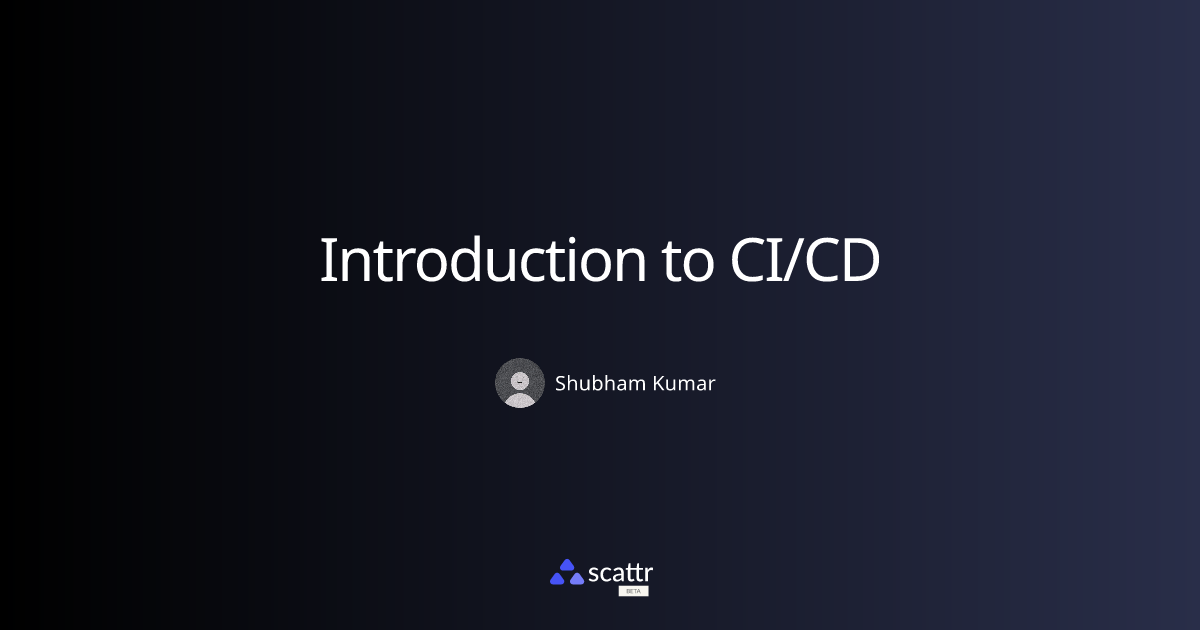CI/CD
CI/CD, short for Continuous Integration and Continuous Delivery/Deployment, is a software development practice that aims to automate and improve the process of building, testing, and releasing software. By utilizing a CI/CD pipeline, developers can quickly and consistently deliver high-quality software that is ready for deployment.
Continuous Integration
Continuous Integration (CI) is a software development practice where developers regularly merge their code changes into a central repository. Each merge is then verified by an automated build, allowing teams to detect problems early.
Continuous Delivery
Continuous Delivery (CD) is a software development practice where code changes are automatically built, tested, and prepared for a release to production. CD aims to shorten the lead time between code changes and their release to production.
Continuous Deployment
Continuous Deployment (CD) is a software development practice where code changes are automatically built, tested, and released to production. CD aims to shorten the lead time between code changes and their release to production.
CI/CD Pipeline
A CI/CD pipeline is a set of automated processes that takes code from a version control repository and builds, tests, and deploys it to a production environment. The goal of a CI/CD pipeline is to automate the build, test, and release process.
A CI/CD pipeline typically consists of several stages, each of which is responsible for a specific step in the software development process. These stages may include:
- Source code management: This stage is responsible for managing and storing the source code for the software. This may include tracking changes, managing branches, and performing code reviews.
- Build: This stage is responsible for building the software from the source code. This may include compiling the code, running unit tests, and generating artifacts (such as executables or Docker images).
- Test: This stage is responsible for running automated tests on the software to ensure that it functions as expected. This may include unit tests, integration tests, and end-to-end tests.
- Deploy: This stage is responsible for deploying the software to a staging or production environment. This may include pushing Docker images to a registry, deploying to a Kubernetes cluster, or releasing to a cloud platform.
- Monitor: This stage is responsible for monitoring the deployed software to ensure that it is functioning properly. This may include tracking metrics, logging errors, and alerting on issues.
To set up a CI/CD pipeline, developers first need to choose a CI/CD platform. There are many different options available. Some popular options include Jenkins, CircleCI, and GitLab.
Once a platform has been chosen, developers need to configure the pipeline by defining the stages and the tasks that need to be performed in each stage. This can typically be done using a YAML file or a graphical interface provided by the CI/CD platform.
For example, a simple CI/CD pipeline for a Node.js application might look like this:
stages:
- build
- test
- deploy
build:
stage: build
image: node:latest
script:
- npm install
- npm run build
test:
stage: test
image: node:latest
script:
- npm run test
deploy:
stage: deploy
script:
- docker build -t my-app .
- docker push my-app
This pipeline consists of three stages: build, test, and deploy. In the build stage, the source code is built using the npm install and npm run build commands. In the test stage, the software is tested using the npm test command. In the deploy stage, the software is built into a Docker image and pushed to a registry.
Once the pipeline has been defined, developers can trigger a build by committing changes to the source code repository. This will automatically kick off the pipeline, running each stage in sequence. If any stage fails, the pipeline will stop and the developer will be notified of the issue.
In addition to automating the software development process, a CI/CD pipeline can also provide many other benefits. For example, it can:
- Ensure that software is always delivered quickly and consistently
- Reduce the need for manual intervention and the risk of human error
- Allow developers to focus on writing code, rather than worrying about the deployment process
- Provide a clear view of the software development process,including any issues or failures
- Enable faster feedback, allowing developers to quickly address and fix problems
- Provide a consistent and predictable deployment process, making it easier to roll back or redeploy software if necessary
To get started with a CI/CD pipeline, follow these steps:
- Choose a CI/CD platform. There are many different options available, each with its own strengths and weaknesses. Consider factors such as cost, features, and integration with other tools.
- Configure the pipeline by defining the stages and tasks that need to be performed in each stage. This can typically be done using a YAML file or a graphical interface provided by the CI/CD platform.
- Connect the pipeline to the source code repository. This will allow the pipeline to automatically trigger builds when changes are committed to the repository.
- Trigger a build by committing changes to the source code repository. This will kick off the pipeline and run each stage in sequence.
- Monitor the pipeline to ensure that it is running smoothly and address any issues or failures that may occur.
By following these steps, developers can quickly set up a CI/CD pipeline and start delivering high-quality software consistently and efficiently.
Thank You
If you have any queries you can post in the comment.
You can also connect with me on LinkedIn and Twitter
This article is published w/Scattr

